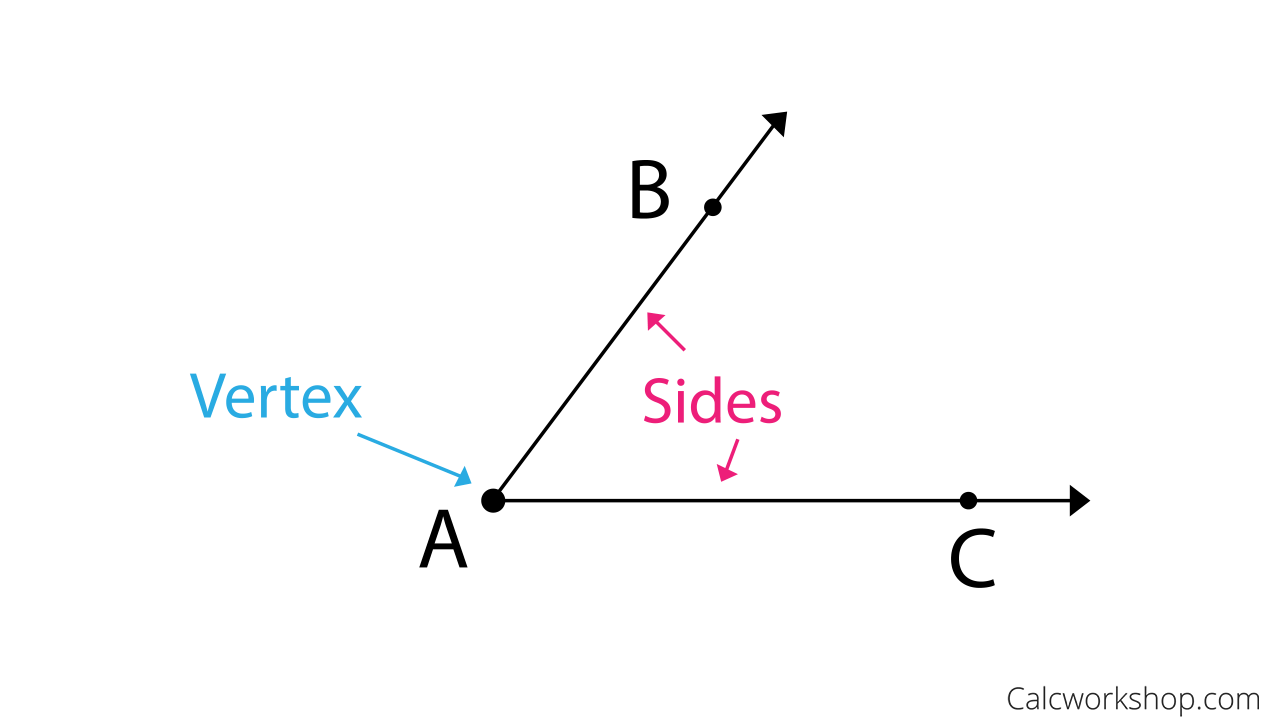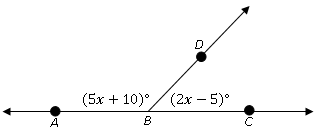
The symbol can be used to represent angles. Angle Relationships Geometry Basics.

The angle addition postulate states that if a point is within an angle and you add the two angles that are made by drawing a line through the point that the total will equal the large angle.
Angle addition postulate definition. Angle addition postulate states that when two angles are placed side by side the resulting angle will equal the sum of the two original angle measures. Learn about the definition of the angle. Angle Types The Angle Addition Postulate.
A Definition What Does That Actually Mean. Real-Life Application Another Postulate. The Segment Addition Postulate Practice Questions To Sum Up Pun Intended Parts of The Angle.
An angle is formed when two lines or rays meet at the same endpoint. The symbol can be used to represent angles. The definition of angle addition postulate states that If a ray is drawn from point O to point P which lies in the interior region of MON then MOP NOP MON.
This postulate can be applied to any pair of adjacent angles in math. The Angle Addition Postulate basically means we are taking two angles and joining them together to make one LARGER angle. Heres a basic example.
Well take GEM and MEO. Lets join them together do that the angle converges at point E. Well also lay them together so that the two angles share the same border EM.
The angle addition postulate states that if a point is within an angle and you add the two angles that are made by drawing a line through the point that the total will equal the large angle. Angle subtraction four total angles. If two congruent angles are subtracted from two other congruent angles then the differences are congruent.
What is definition of postulate in math. A statement also known as an axiom which is taken to be true without proof. Angle Addition Postulate defines that the if a position D lies in the inside of ABC then ABD DBC ABC.
An angle is supposed to be a complementary angle. If the sum of two angles are equal to 90 then it is known as complementary angle. Angle Addition Postulate The angle addition postulate states that if D is in the interior of ABC then ABD CBD ABC.
The following diagram gives an example of the Angle Addition Postulate. Scroll down the page for more examples and solutions. Angle Addition Postulate and Angle Bisectors.
How to use the Angle Addition Postulate to find unknown angle measures. Name Definition Visual Clue Angle Addition postulate For any angle the measure of the whole is equal to the sum of the measures of its non-overlapping parts Linear Pair Theorem If two angles form a linear pair then they are supplementary. Congruent supplements theorem If two angles are supplements of the same angle then they are congruent.
Angle Addition Postulate The angle addition postulate states that if B is in the interior of A O C then m A O B m B O C m A O C That is the measure of the larger angle is the sum of the measures of the two smaller ones. Definition of an angle bisector. Definition of right angles.
What is always the 1st statement in reason column of a proof. Def- Acute angle 90. Obtuse Angle def- Obtuse angle 90.
Straight Angles def- Straight angle 180. Segment Addition Postulate If point P is between points A and B then AP PB AB. Sum of parts equal whole.
Angle Addition Postulate - If B is in the interior of. Sum of parts equal whole. Triangles and Angles Postulate.
A statement accepted as true without proof. A circle has 360 180 180 It follows that the semi-circle is 180 degrees. If point P lies in the interior of L ABC then m L ABP m LCBP m Z ABC Z ABP is adjacent to ZCBP because they share a common vertex and side.
The Angle Addition Postulate. The Angle Addition Postulate states that the measure of an angle formed by two angles side by side is the sum of the measures of the two angles. The Angle Addition Postulate can be used to calculate an angle formed by two or more angles or to calculate the measurement of a missing angle.
The segment addition postulate states that if we are given two points on a line segment A and C a third point B lies on the line segment AC if and only if the distances between the points meet. If playback doesnt begin shortly try restarting your device. Segment Addition Postulate Proof.
Angle Addition Postulate Geometry 3_3 B definition of angle bisector. In geometry the postulate of addition of segments says that with 2 points a and c a third point b lies on the segment ac if the distances. In geometry the Segment Addition Postulate states that given 2 points A and C a third point B lies on the line segment AC if and only if the distances between the points satisfy the equation AB BC AC.
This is related to the triangle inequality which states that AB BC displaystyle geq AC with equality if and only if A B and C are. Definition of segment addition postulate. That is the measure of the larger angle is the sum of the measures of the two smaller ones.
The definition of the segment addition postulate states that if we have a line segment ac and a point b within it the sum of the lengths of the. Use the segment addition postulate to write an equation. Definition of Angle Bisector.
Definition of Congruent Angles. 1 and 2 form a linear pair. Angle Addition Postulate.
Angle Relationships Geometry Basics. The segment addition postulate states that if we are given two points on a line segment a and c a third point b lies on the line segment ac if. The segment addition postulate is similar to the angle addition postulate but you are working with line.
The segment addition postulate is often useful in proving results on the congruence of segments. Multiplication Postulate If equal quantities are multiplied by equal quantities the products are equal. Subtraction Postulate If equal quantities are subtracted from equal quantities the differences are equal.
Addition Postulate If equal quantities are added to equal quantities the sums are equal. Transitive Property If a b and b c then a c.